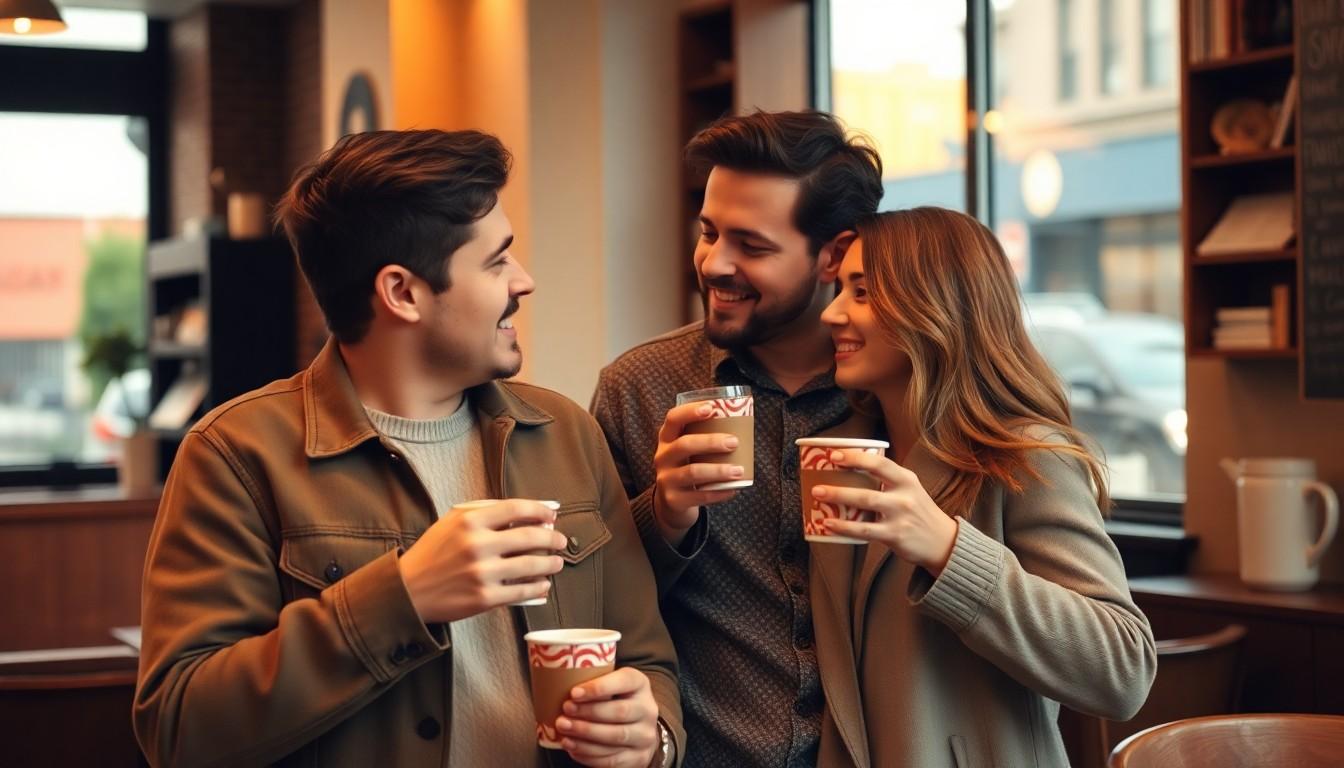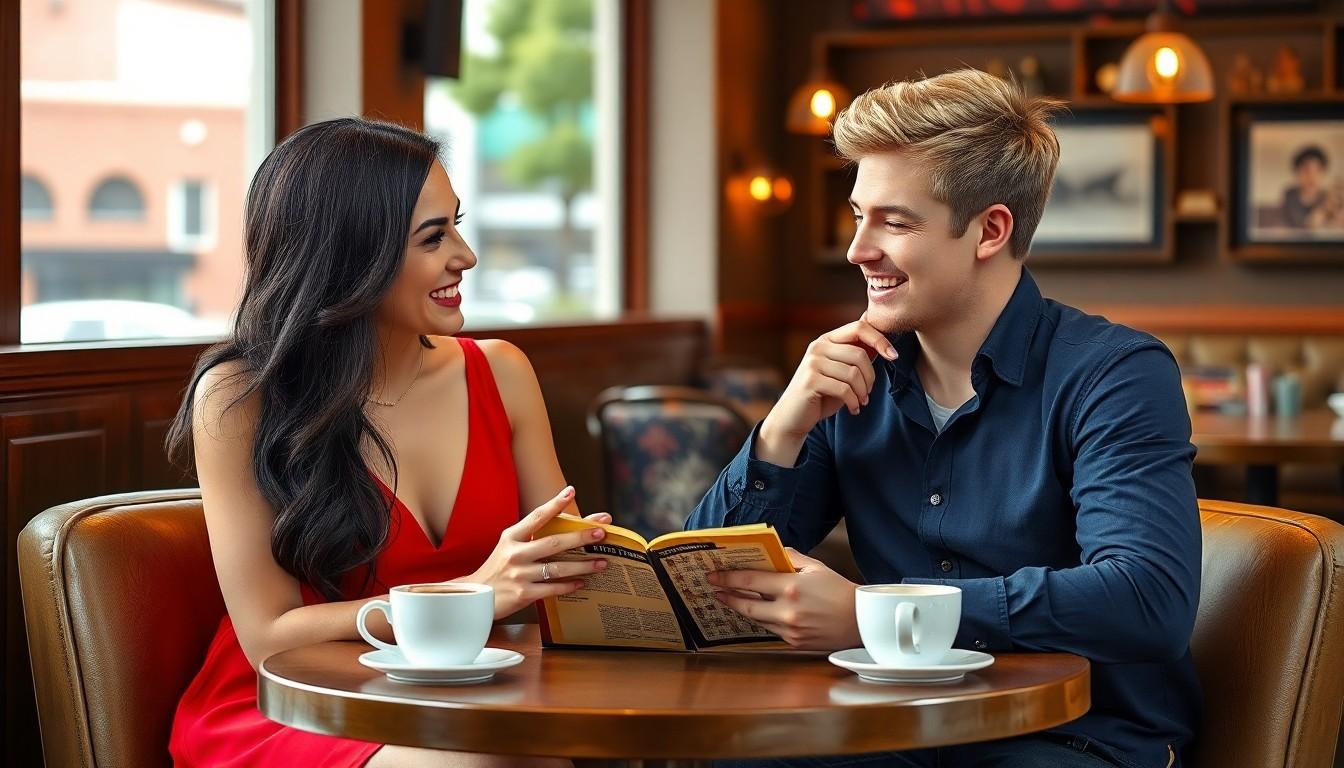In the world of cinema, nothing tickles the heart quite like the enemies to lovers trope. It’s a delightful rollercoaster of tension, witty banter, and unexpected romance that keeps viewers glued to their seats. Picture this: two characters who can’t stand each other suddenly find themselves tangled in a whirlwind of passion. It’s the perfect recipe for laughter, tears, and the occasional eye roll—just the way we like it!
Enemies to Lovers Movie Genre Crossword
The enemies to lovers genre thrives on tension between protagonists. Characters often start with conflict, driven by strong personalities or opposing goals. This initial animosity can spark engaging dialogues filled with witty banter. Audiences enjoy witnessing how anger can evolve into affection.
Romantic developments in this genre arise from gradual understanding. Characters undergo significant growth, which transforms their relationship dynamically. Often, shared experiences reveal vulnerabilities, fostering empathy and connection. These moments are crucial in creating a believable transition from foes to lovers.
Additionally, the emotional conflict keeps viewers invested. Stakes increase as characters navigate misunderstandings and jealousy. The unpredictability of their journey enhances viewer engagement, providing an exhilarating experience. Each twist and turn contributes to character development and plot progression.
Movies typically illustrate this genre through various settings. Historical romances, office settings, or even fantasy worlds can serve as backdrops for this trope. Each context adds unique layers to character interactions and narrative depth.
Success stories within the genre showcase how opposites can attract. Films like “Pride and Prejudice” and “10 Things I Hate About You” exemplify this beautiful complexity. These narratives encourage viewers to consider unlikely connections, highlighting that love can arise from the most unexpected places.
Understanding the enemies to lovers dynamic involves recognizing its universal themes. Conflict resolution, personal growth, and unexpected chemistry capture the essence of this genre. By appealing to human emotions, these stories resonate with a wide audience and remain a staple in cinema.
Popular Themes in Enemies to Lovers Films

Enemies to lovers films thrive on engaging themes that resonate with viewers. Two prominent themes include conflict and resolution, as well as character development.
Conflict and Resolution
Conflict fuels the enemies to lovers dynamic. Tension between characters creates a compelling storyline, prompting audience investment. Disagreements often lead to escalating situations, revealing deeper vulnerabilities. These misunderstandings serve as catalysts for later emotional connection. Resolution follows a pattern where initial irritation transforms into understanding. Unique scenarios, like mistaken identities or rivalries, heighten the stakes. Consequently, laughter and conflict intertwine, creating unforgettable moments. This balance captivates viewers, leaving them eager for character growth.
Character Development
Character development plays a crucial role in the enemies to lovers narrative. Growth often results from shared experiences that break down barriers. Initial traits, such as arrogance or stubbornness, can evolve into empathy and tenderness. Characters frequently learn about themselves through interactions with each other. Layers of complexity reveal hidden fears and aspirations, making their journeys relatable. Dynamic relationships encourage viewers to root for their transformation. Emotional arcs culminate in heartfelt moments, where love triumphs over initial hostility. Such development underscores the trope’s allure while highlighting the importance of personal growth.
Crossword Clues Related to the Genre
Understanding the terminology and references in the enemies to lovers genre enhances crossword puzzles. Here are some essential elements that commonly appear in clues.
Common Terminology
Conflict, chemistry, and resolution frequently describe this genre. A “tension-filled relationship” often refers to the dynamic between protagonists. “Witty banter” highlights the clever dialogues that spark interest. Common settings linked to the trope include “office romance” and “historical backdrop.” The term “character growth” signifies the evolution that characters experience. Use of “forbidden love” is also prevalent, indicating the challenges faced by the couple. Each of these terms adds depth and aids in recognizing patterns in the genre.
Famous Movies and Quotes
Several iconic films capture the essence of the enemies to lovers trope. “Pride and Prejudice” features a famous line, “You must allow me to tell you how ardently I admire and love you.” Another example, “10 Things I Hate About You,” includes the memorable quote, “I love you. I hate the way I don’t hate you.” Classic titles like “The Proposal” and “Much Ado About Nothing” also exemplify this theme. These movies offer a wealth of quotes that inspire crossword clues, connecting fans to beloved moments.
The Appeal of Enemies to Lovers Stories
Enemies to lovers stories captivate audiences through the compelling tension that characterizes the initial relationship between protagonists. Characters often display strong personalities and opposing goals, which leads to engaging dialogues. That conflict creates a magnetic pull, drawing viewers into their journey from animosity to affection.
Witty banter serves as a pivotal element, fostering an atmosphere charged with chemistry. The emotional conflict keeps viewers invested, with misunderstandings and jealousy heightening the stakes of the narrative. Each encounter reveals vulnerabilities, allowing characters to develop empathy and understanding over time.
Significant character growth plays a crucial role in this genre. Experiences shared by the characters lead to moments of realization and transformation. Arrogance can evolve into compassion, making their journeys relatable and compelling.
Settings enhance the narrative, from historical romances to modern office environments. Each backdrop adds unique layers to the story, enriching the characters’ interactions and escalating the drama. Successful films like “Pride and Prejudice” and “10 Things I Hate About You” illustrate how the complexity of emotions fuels the trope.
Ample opportunities for conflict and resolution arise throughout the storyline. Disagreements escalate, often serving as catalysts for deeper connections. Ultimately, the resolution showcases the shift from irritation to understanding, underscoring the allure of the enemies to lovers dynamic.
The genre’s exploration of fundamental themes resonates with audiences, making it a beloved staple in cinema. By delving into personal growth and unexpected chemistry, these stories highlight the intricacies of human relationships in a way that is both entertaining and relatable.
Blend of Tension and Romance
The enemies to lovers genre continues to enchant audiences with its blend of tension and romance. Its ability to transform conflict into connection showcases the power of character development and emotional growth. By highlighting the complexities of relationships, this trope resonates deeply with viewers seeking relatable narratives.
Crossword enthusiasts can find joy in exploring the terminology and themes that define this genre. From iconic films to memorable quotes, the clues offer a fun way to engage with beloved stories. Ultimately, the enemies to lovers dynamic remains a timeless favorite, proving that love can emerge from the most unexpected circumstances.

